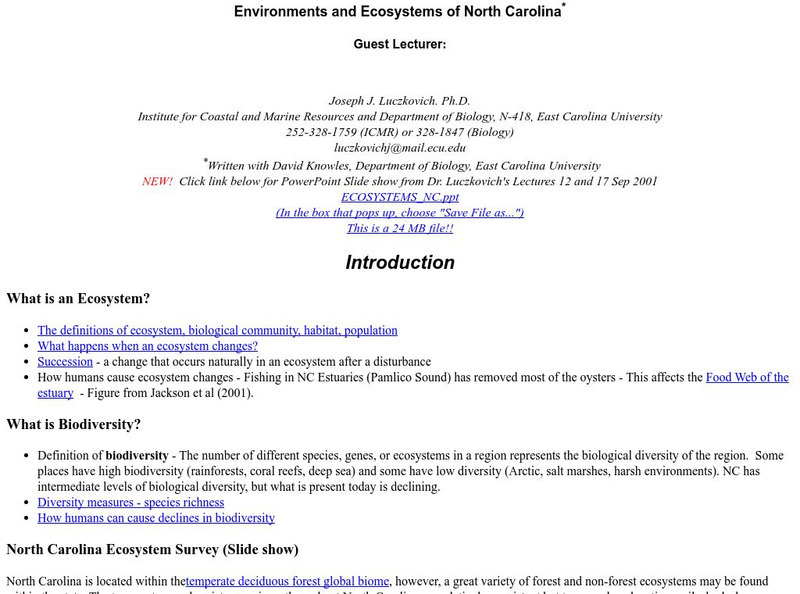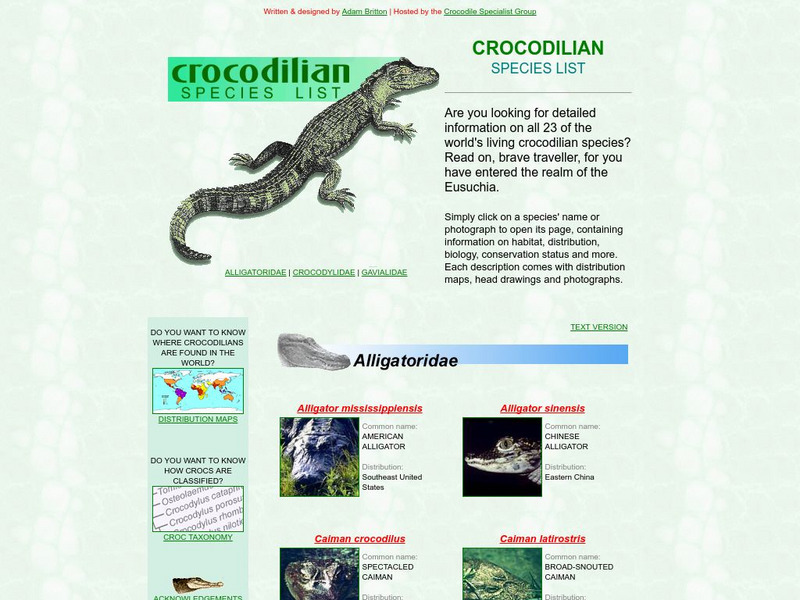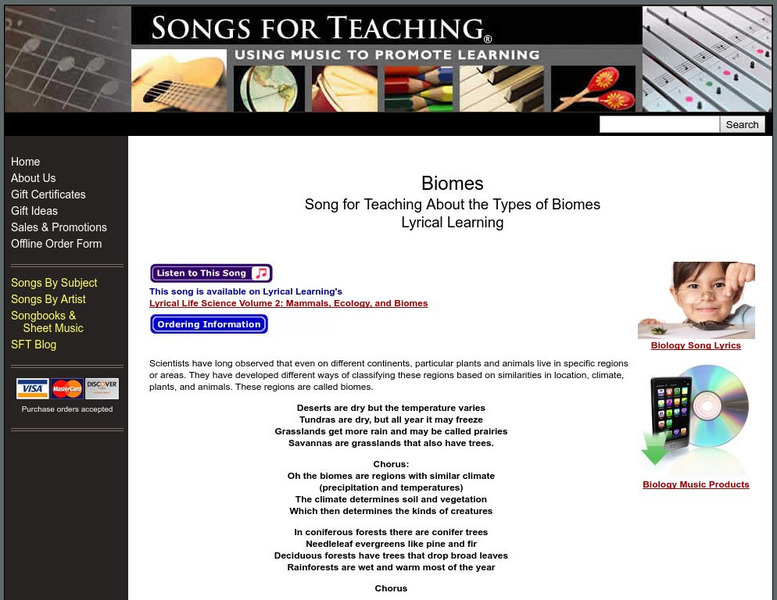A-Z Animals
A Z Animals: Reference: Habitats: Freshwater
Learn about the plants, animals, and other characteristics of some freshwater ecosystems.
Science Education Resource Center at Carleton College
Serc: Fish Habitats
During this instructional activity, students spend time looking at pictures of fish and their habitat, talking about what all animals need to live, making a poster of a fish habitat, and finally visiting a lake.
Other
Environments and Ecosystems of North Carolina
North Carolina is located within the temperate deciduous forest global biome, however, a great variety of forest and non-forest ecosystems may be found within the state. The temperature and moisture regimes throughout North Carolina are...
Ducksters
Ducksters: Science for Kids: Freshwater Biome
Kids learn about the freshwater aquatic biome. Ecosystems such as rivers, streams, ponds, lakes, wetlands, swamps, and bogs.
Environmental Education for Kids
Eek!: Lake Superior
This site provides facts, illustrations, and more about the largest Great Lake. Includes descriptions of wildlife and industry. For grades 4-8.
abcteach
Abcteach: Ponds
[Free Registration/Login Required] The abcteach directory contains sample pages from their pond unit for non-members. Handouts are in PDF format.
CK-12 Foundation
Ck 12: Life Science: Aquatic Biomes
[Free Registration/Login may be required to access all resource tools.] Aquatic biomes can be generally classified based on the amount of salt in the water. Freshwater biomes have less than 1% salt and are typical of ponds and lakes,...
Science Education Resource Center at Carleton College
Serc: Macroinvertebrates and Indicators of Water Quality
During this field activity, students will examine different aquatic habitats, collect and identify macroinvertebrates from each and use an index to determine water quality. They will also be able to explain the meaning of tolerant and...
Other
Minnesota Department of Natural Resources: Largemouth Bass
This "snapshot" of large mouth bass emphasizes its desirability as a sport fish, and its habitats and feeding patterns.
Michigan Reach Out
Bottle Habitat
Students create and observe an aquatic habitat. After recording observation students graph the changes.
Ducksters
Ducksters: Science for Kids: World Biomes and Ecosystems
Kids learn about the world's biomes and ecosystems. The network of life and biodiversity needed for all to survive.
Other
Crocodilian Species List
This website offers in-depth information and photos on all living crocodilian species.
PBS
Bill Moyers Reports: Earth on Edge
PBS presents this report by Bill Moyer on the current state of the earth. Information is provided on each of the planets ecosystems as well as ways to get involved. You are even able to access portions of the program that was aired.
University of California
Ucmp: The World's Biomes
The University of California Museum of Paleontology hosts this site devoted to the study of the earth's biomes, which are the world's major communities, classified according to the predominant vegetation and adaptations of organisms to...
The Wild Classroom
The Wild Classroom: Biomes
This excellent resource explores all of the biomes found on planet Earth! A side menu indicates the world's biomes and provides details on each. Colorful interactive maps, video clips, lesson plans, species profiles, and so much more...
Songs for Teaching
Songs for Teaching: Biomes
Use this site to see how many of the animals and plants that your students can remember from each biome after listening to this song.
Songs for Teaching
Songs for Teaching: Types of Biomes
Doug Eldon performs this great song which tells about the different biomes and their characteristics. Great way to begin your unit on the biomes.
Unique Australian Animals
Unique Australian Animals: Sawfish
Use this site to learn more about the Sawfish with this brief description and images.















